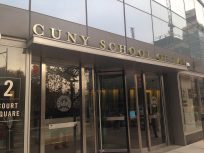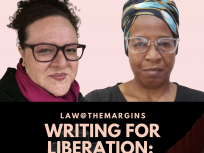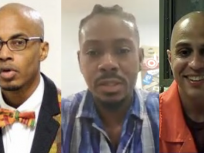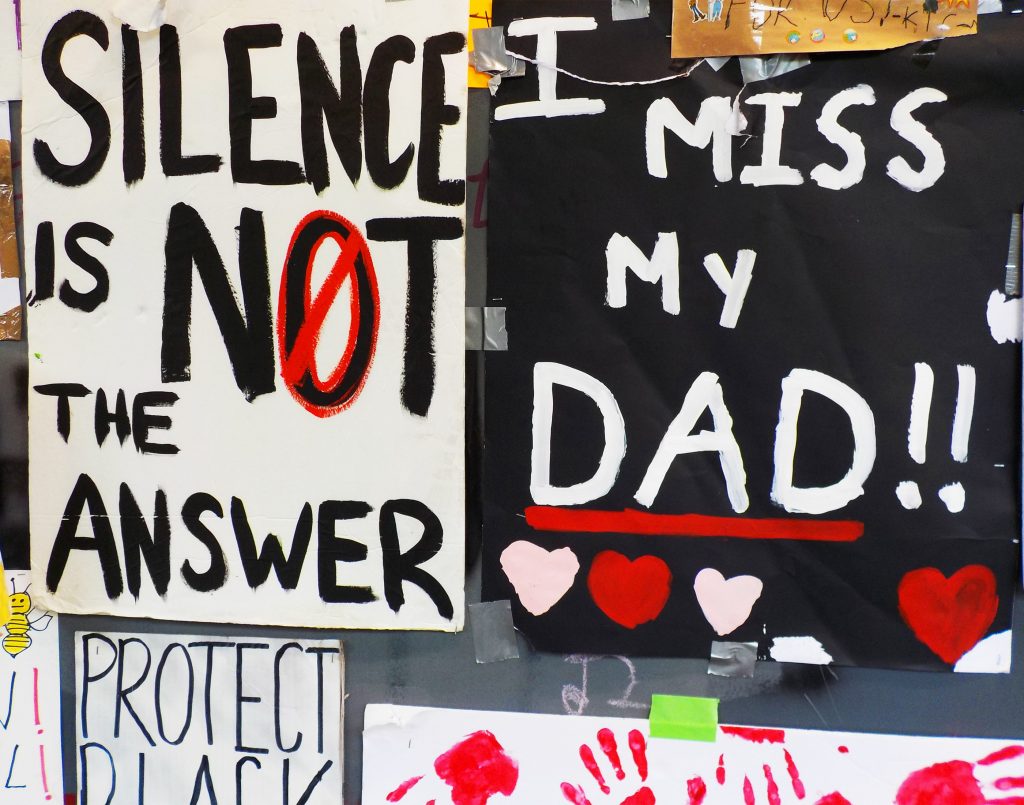
It’s time to end racist, violent policing across the United States and start giving communities control of everything they need to protect their health, safety and well-being.
By Joseph Young
The uprising in response to George Floyd’s death was decades, if not centuries, in the making. The way Floyd died on his stomach while a Minneapolis police officer placed his knee on Floyd’s neck conjured up the cruelty and barbarity of slavery and memories from my own childhood.
I was 12 years old when Martin Luther King Jr. was murdered on April 4, 1968. King’s death hit me hard, because he was an advocate of peaceful, nonviolent protest who suffered the wrath of white supremacists for daring to stand up for the civil rights of African-Americans. Others civil rights activists assassinated during the ’60s included Malcolm X, Medgar Evers, three young Freedom Riders, and countless others. In some ways, today feels like the 1960s all over again.
As a young person growing up in Los Angeles, I reached my teens and became numb to the persistent violence in everyday life . When I was a teenager, a police officer stopped me and put me in a chokehold. I stood there, indifferent to the violence that was being inflicted upon me. I wasn’t angry or fearful but numb. The officer released me, with a casual smile I haven’t forgotten.
I’m 64 now, and I still feel just as numb as I did coming of age. State-sanctioned violence and terrorist murder, like that committed by Dylann Roof, the Charleston church murderer, are as rampant as they were during the civil rights era.
The cellphone video of Floyd’s death sparked civil unrest that has gripped the nation. Young people have been galvanized by a racist, violent police system that kills Black people. They have been brought together by political disappointments that do nothing to change injustice.
In June, I joined the young demonstrators at the White House over the death of Floyd. The crowd looks like what America should look like. They are mostly young and made up of all colors and backgrounds. It is certain that the American ruling class will try and divide us. The divide-and-conquer strategy is as old as the American republic and the Constitution. Unprovoked police violence will follow.
The urgency of a better future compels us to act now. The rumble of discontent in the street is loud and furious. If America doesn’t listen to the calls for radical change, it will collapse under the weight of its history and own indecision.
Washington, D.C., Mayor Muriel Bowser received national acclaim for renaming a portion of 16th Street NW, leading to Lafayette Square and the White House, “Black Lives Matter Plaza.” Bowser also had the slogan painted on the street, in massive yellow letters, following Floyd’s death. Those are symbolic gestures.
Washington, D.C., and other cities across the United States, must take immediate action to tackle systemic racism in policing. Activists are calling for the defunding of police departments around the nation and the redirection of those funds to community services, such as education, housing and health care.
Floyd’s death is proof that work needs to be done beyond reforming a broken police system. The abolition of the police does not mean the end of law and order in society. It does not mean anarchy in the streets. It means the end of racist, violent policing in the United States and the beginning of a new public safety system that protects the health, safety and well-being of Black people, and all people. That future starts with community control — which means giving the people control of everything their communities need to grow and thrive, including being in charge of overseeing the police and determining how policing works in their communities. It’s why equity advocates are in favor of funding communities, not cops.
In 1987, Toni Morrison wrote in “Beloved,” a story of slavery and racism in America, “And O my people, out yonder, hear me they do not love your neck unnoosed and straight. So love your neck; put a hand on it, grace it, stroke it and hold it up.”
The torch has been passed to a new generation of freedom fighters. Their aim must be to carry the light for the millions who want freedom and human rights for all.
The photographs in this essay were made near the White House where protesters are expressing their discontent over George Floyd’s brutal death in police custody.
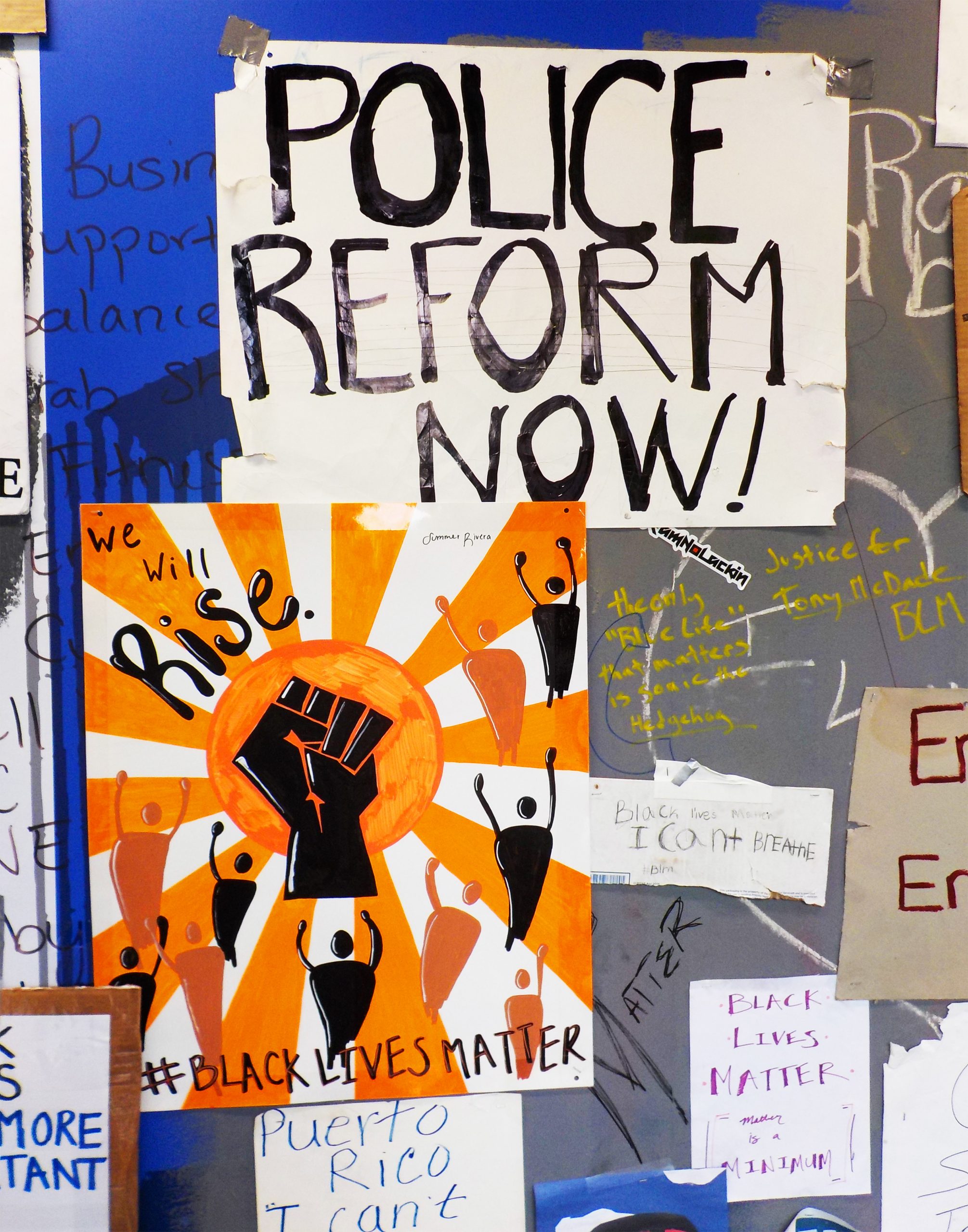
Hundreds of handmade signs and protest posters were hung on the fence sealing off Lafayette Square and the White House. They were removed and placed across H Street NW. The pop-up display occurred suddenly and unplanned as a memorial to George Floyd. (Joseph Young)

“The Creation,” a poem written by James Weldon Johnson in 1922, said, “Toiling over a lump of clay/Till He shaped it in His own image;/Then into it He blew the breath of life,/And man became a living soul.” (Joseph Young)

“Slavery has never been abolished from America’s way of thinking,” says Nina Simone, the pianist, singer, songwriter and activist. (Joseph Young)

All colors of people are united to end racism. It’s one reason why this moment of protest feels different than others that have come before it. (Joseph Young)

American dream or nightmare? Demonstrators of all ages are standing up and fighting for a better tomorrow after witnessing years of political disappointments. (Joseph Young)
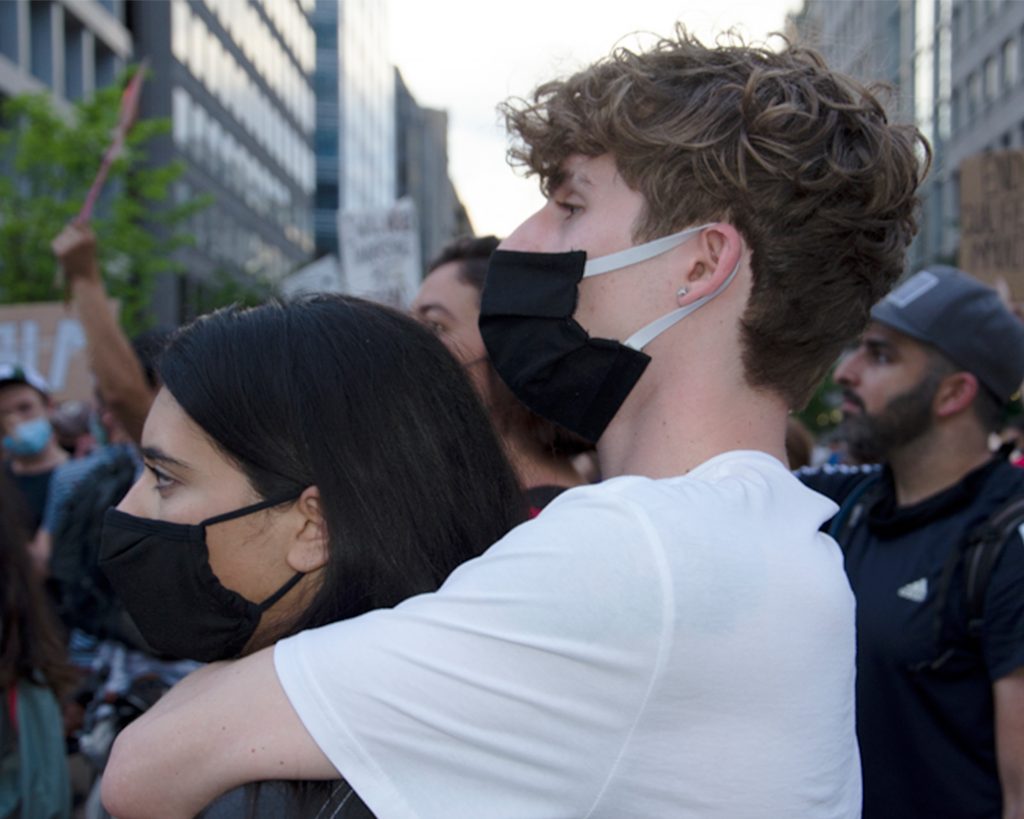
Young people have been galvanized by the brutal death of George Floyd. (Joseph Young)

If the face mask is the symbol of the global coronavirus pandemic, then the cellphone is the symbol of the civil unrest over the death of George Floyd, another unarmed Black man who died in police custody. (Joseph Young)
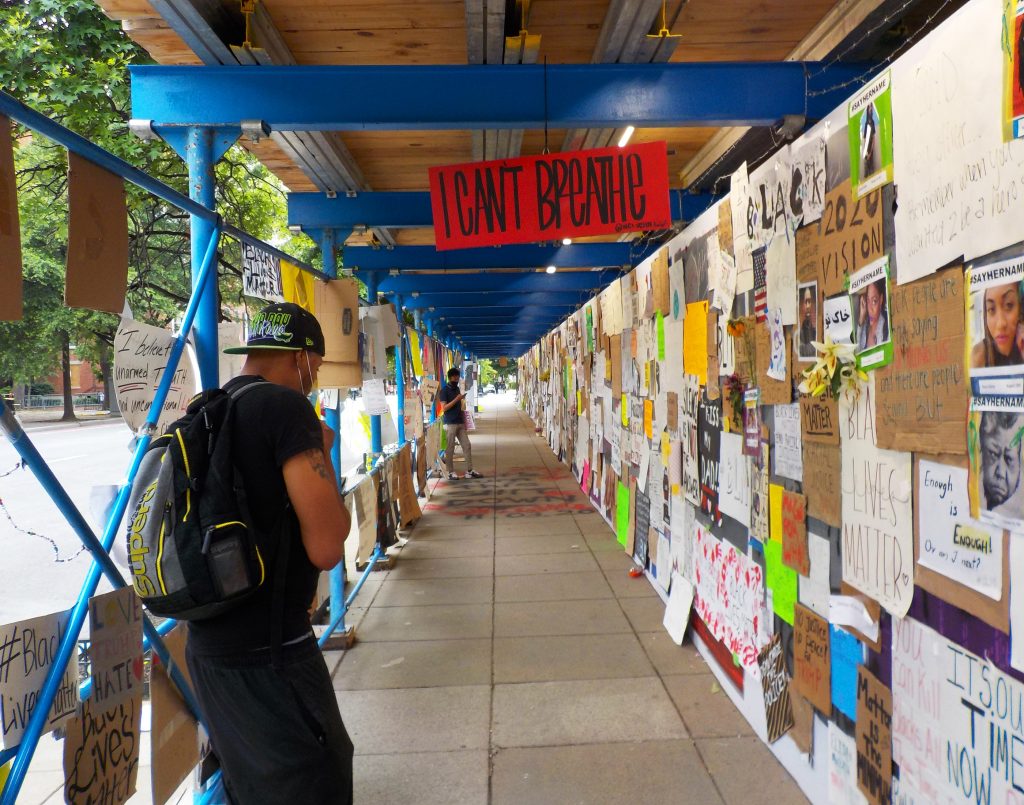
The wall of protest posters is a clarion call to create a new public safety system. People, such as this man, have come from around the region to view the Floyd memorial. (Joseph Young)
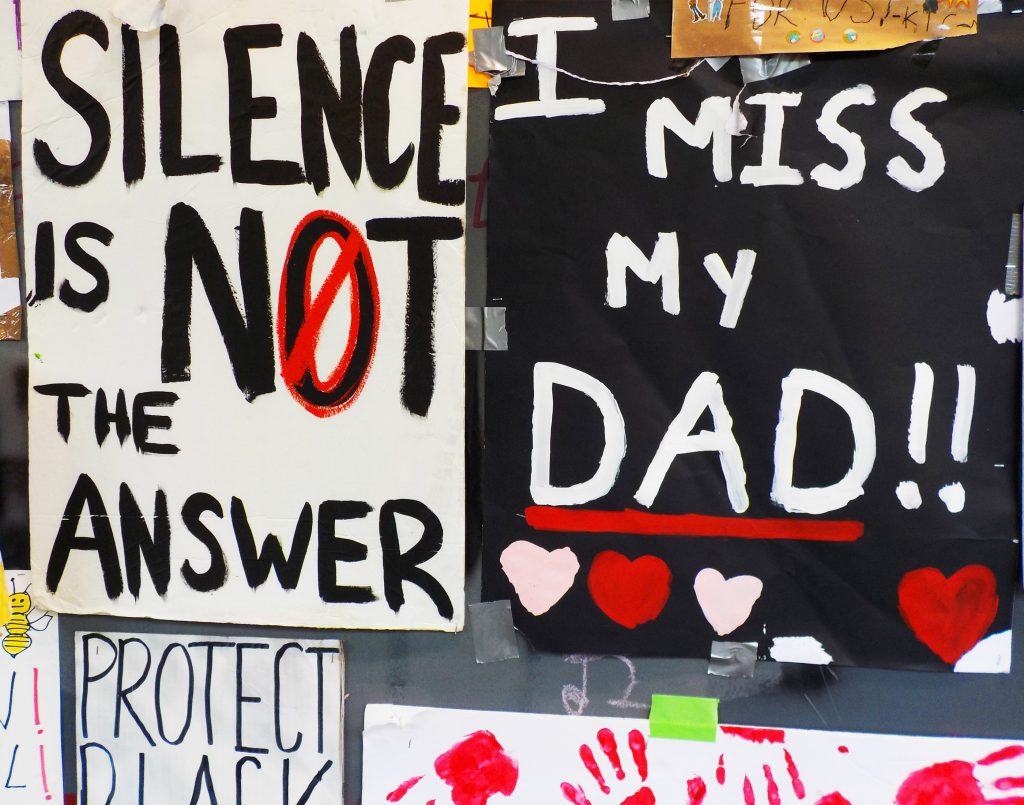
George Floyd gasped for air and called out to his dead mother while a Minnesota police officer pressed his knee into his neck for 8 minutes and 46 seconds. Floyd pleaded repeatedly to the officer “I can’t breathe” before he died. (Joseph Young)
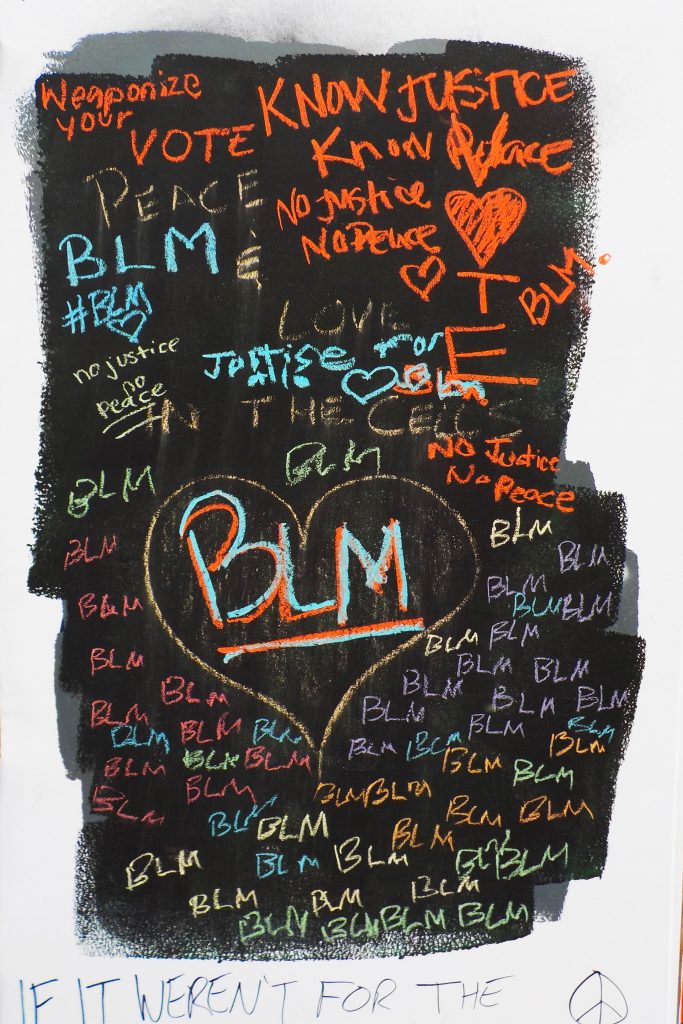
“Nobody’s free until everybody’s free,” said Fannie Lou Hamer, a civil rights icon and voting right pioneer from Mississippi who fought for Black liberation in the 1960s. (Joseph Young)

The protest posters champion “Black Lives Matter.” All lives will matter when Black lives matter. (Joseph Young)
Joseph Young is a photographer and journalist living in Washington, D.C. His photography and journalism has appeared in The Washington Post Magazine, The Washington Times, Washington Afro-American Newspaper and The Washington Informer. His photographs are in the collection of the Smithsonian’s Anacostia Community Museum.
Community Based News Room publishes the stories of people impacted by injustice and aspiring for change. Do you have a story to tell? Please contact us at CBNR. To support our Community Based News Room, please donate here.

